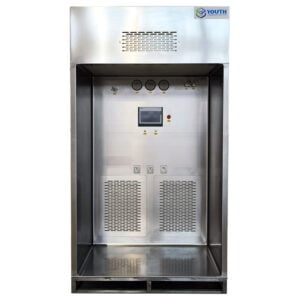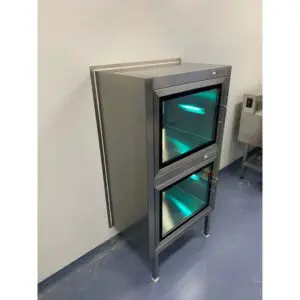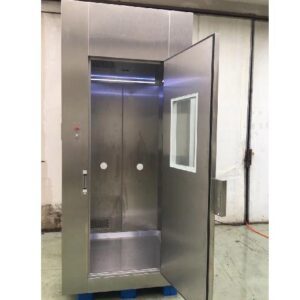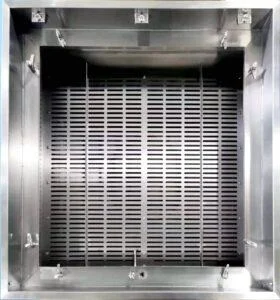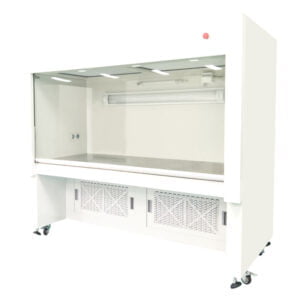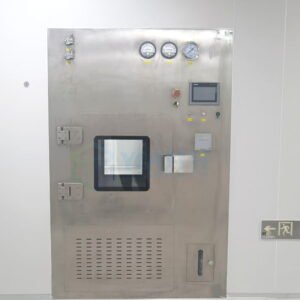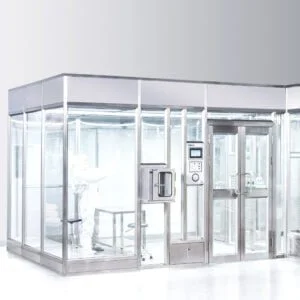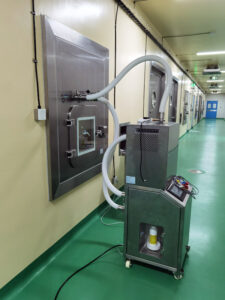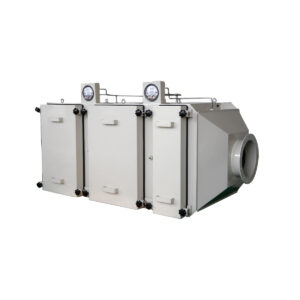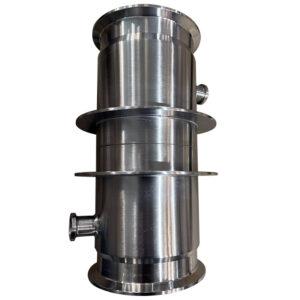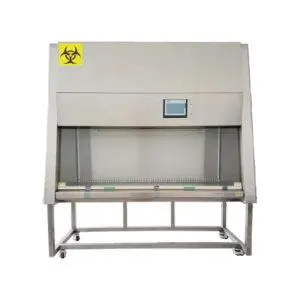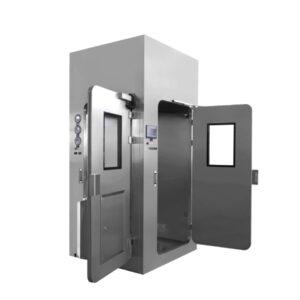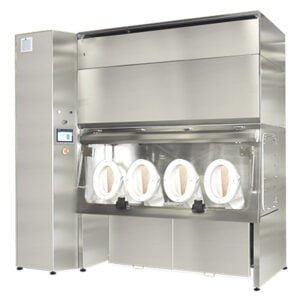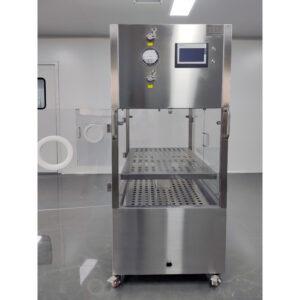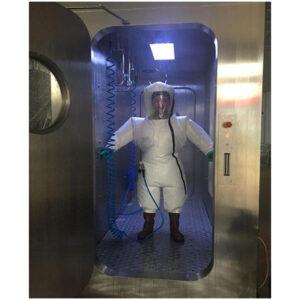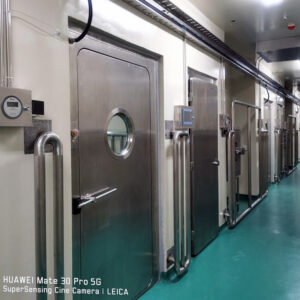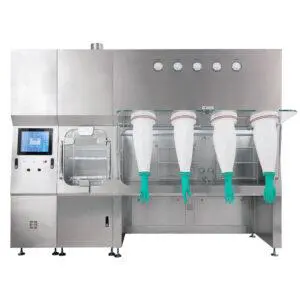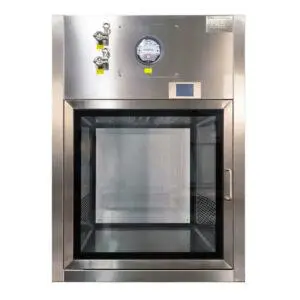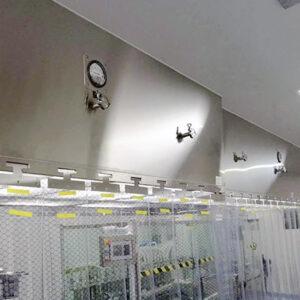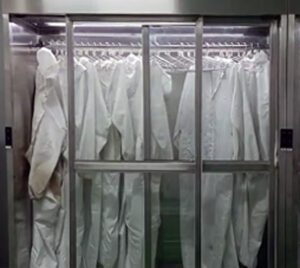In the world of cleanroom technology, maintaining a sterile environment is paramount. As we approach 2025, the importance of preventive maintenance for laminar flow units continues to grow. These critical components of cleanroom systems play a vital role in ensuring particle-free air flow, protecting sensitive processes and products from contamination. This article delves into the essential practices and emerging trends in laminar flow unit preventive maintenance, providing valuable insights for industry professionals and cleanroom managers alike.
As cleanroom technology evolves, so do the methods and strategies for maintaining laminar flow units. From routine cleaning procedures to advanced diagnostic techniques, we'll explore the comprehensive approach needed to keep these systems operating at peak efficiency. We'll discuss the latest innovations in filter technology, the impact of Industry 4.0 on maintenance protocols, and the growing emphasis on sustainability in cleanroom operations.
As we transition into the main content, it's crucial to understand that effective preventive maintenance is not just about following a checklist. It's about adopting a proactive mindset and staying ahead of potential issues before they can compromise the integrity of your cleanroom environment. Let's explore the key aspects of laminar flow unit preventive maintenance for 2025 and beyond.
Proper preventive maintenance of laminar flow units is essential for ensuring the longevity and efficiency of cleanroom operations, with regular upkeep potentially extending the life of these critical systems by up to 50%.
What are the fundamental components of a laminar flow unit maintenance plan?
At the heart of any effective laminar flow unit preventive maintenance strategy lies a comprehensive plan that addresses all critical components. This plan serves as the foundation for ensuring the continued performance and longevity of your laminar flow systems.
A well-structured maintenance plan typically includes regular inspections, cleaning protocols, filter replacements, and performance testing. It also outlines the frequency of these activities and assigns responsibilities to ensure consistency and accountability.
Diving deeper, the maintenance plan should be tailored to the specific needs of your facility and the type of laminar flow units in use. For instance, units in high-traffic areas or those exposed to more contaminants may require more frequent attention. Additionally, the plan should incorporate the latest industry standards and best practices, which are continually evolving as technology advances.
According to industry experts, a comprehensive laminar flow unit maintenance plan can reduce unexpected downtime by up to 70% and significantly extend the lifespan of HEPA filters.
| Component | Maintenance Frequency | Key Action |
|---|---|---|
| HEPA Filters | Every 6-12 months | Integrity testing |
| Pre-filters | Monthly | Inspection and replacement |
| Blower Motor | Quarterly | Lubrication and belt check |
| Work Surface | Daily | Cleaning and disinfection |
In conclusion, a robust maintenance plan is the cornerstone of effective laminar flow unit upkeep. By addressing all critical components and adapting to the specific needs of your facility, you can ensure optimal performance and longevity of your laminar flow systems.
How has filter technology evolved for laminar flow units?
Filter technology is at the core of laminar flow unit functionality, and recent advancements have significantly improved their efficiency and lifespan. As we look towards 2025, these innovations are set to revolutionize Laminar flow unit preventive maintenance.
The latest generation of HEPA and ULPA filters boasts improved particle capture rates, lower pressure drops, and enhanced durability. Nano-fiber technology has enabled the creation of filters with finer fibers and more uniform pore sizes, resulting in superior filtration without sacrificing airflow.
Moreover, smart filters equipped with IoT sensors are becoming increasingly common. These sensors can monitor filter performance in real-time, providing valuable data on pressure differentials, airflow rates, and contaminant levels. This technology allows for predictive maintenance, enabling facility managers to replace filters based on actual performance rather than fixed schedules.
Studies show that the latest nano-fiber HEPA filters can capture up to 99.99999% of particles as small as 0.1 microns, a significant improvement over traditional filters.
| Filter Type | Particle Capture Rate | Typical Lifespan |
|---|---|---|
| Standard HEPA | 99.97% at 0.3 microns | 3-5 years |
| ULPA | 99.9995% at 0.12 microns | 5-7 years |
| Nano-fiber HEPA | 99.99999% at 0.1 microns | 7-10 years |
In conclusion, the evolution of filter technology has had a profound impact on laminar flow unit maintenance. As these advanced filters become more widespread, maintenance protocols will need to adapt to leverage their enhanced capabilities and longevity.
What role does automation play in preventive maintenance for laminar flow units?
Automation is rapidly transforming the landscape of preventive maintenance for laminar flow units. As we approach 2025, the integration of automated systems and artificial intelligence is streamlining maintenance processes and enhancing overall efficiency.
Automated monitoring systems are becoming increasingly sophisticated, capable of tracking a wide range of parameters including airflow velocity, particle counts, and filter performance. These systems can alert maintenance teams to potential issues before they escalate, allowing for timely interventions.
Furthermore, robotic cleaning systems are being developed to perform routine cleaning tasks within laminar flow units. These robots can operate during off-hours, ensuring consistent cleaning without disrupting workflow. They can also reach areas that might be challenging for human operators, improving the overall cleanliness of the unit.
Industry reports suggest that facilities implementing automated maintenance systems for laminar flow units have seen a 40% reduction in manual inspection time and a 25% improvement in overall unit performance.
| Automation Feature | Benefit | Impact on Maintenance |
|---|---|---|
| Real-time monitoring | Early detection of issues | Reduces unexpected downtime |
| Predictive analytics | Optimized maintenance scheduling | Extends component lifespan |
| Robotic cleaning | Consistent and thorough cleaning | Improves cleanliness standards |
| Automated reporting | Enhanced compliance tracking | Simplifies auditing processes |
In conclusion, automation is set to play a pivotal role in the future of laminar flow unit maintenance. By embracing these technologies, facilities can improve the efficiency and effectiveness of their preventive maintenance programs, ultimately leading to more reliable and consistent cleanroom operations.
How does energy efficiency factor into laminar flow unit maintenance?
As sustainability becomes an increasingly important consideration in cleanroom operations, energy efficiency has emerged as a key factor in laminar flow unit maintenance. The YOUTH approach to maintenance now includes strategies to optimize energy consumption without compromising performance.
Modern laminar flow units are designed with energy-efficient components, such as EC (Electronically Commutated) motors and LED lighting. These components not only consume less power but also generate less heat, reducing the overall cooling load on the cleanroom HVAC system.
Maintenance practices are evolving to support these energy-efficient designs. This includes regular calibration of airflow sensors to ensure optimal air velocities, proper sealing of the unit to prevent air leakage, and the use of energy-efficient cleaning products and methods.
Studies have shown that implementing energy-efficient maintenance practices can reduce the power consumption of laminar flow units by up to 30%, resulting in significant cost savings and a reduced carbon footprint.
| Component | Energy-Efficient Option | Energy Savings |
|---|---|---|
| Motor | EC Motor | Up to 50% |
| Lighting | LED | Up to 75% |
| Airflow Control | Variable Speed Drive | Up to 40% |
| Filters | Low Pressure Drop HEPA | Up to 20% |
In conclusion, energy efficiency is becoming an integral part of laminar flow unit maintenance. By adopting energy-efficient components and maintenance practices, facilities can reduce operational costs, minimize environmental impact, and improve overall sustainability.
What are the emerging trends in laminar flow unit cleaning protocols?
Cleaning protocols for laminar flow units are undergoing significant changes as we approach 2025. These evolving practices aim to enhance cleanliness levels while optimizing resource utilization and minimizing downtime.
One of the most notable trends is the shift towards environmentally friendly cleaning agents. Traditional chemical-based cleaners are being replaced by biodegradable alternatives and hydrogen peroxide-based solutions, which are equally effective but less harmful to both operators and the environment.
Another emerging trend is the use of electrostatic sprayers for disinfection. These devices apply an electric charge to cleaning solutions, allowing them to wrap around and evenly coat all surfaces within the laminar flow unit. This technology ensures more thorough coverage and reduces the amount of cleaning solution required.
Recent studies indicate that facilities adopting these advanced cleaning protocols have seen a 60% reduction in microbial contamination levels and a 40% decrease in cleaning time.
| Cleaning Method | Advantages | Effectiveness |
|---|---|---|
| Traditional Manual | Cost-effective, familiar | Moderate |
| Electrostatic Spraying | Thorough coverage, reduced chemical use | High |
| UV-C Disinfection | Chemical-free, rapid | Very High |
| Hydrogen Peroxide Vapor | Penetrates hard-to-reach areas | Extremely High |
In conclusion, the future of laminar flow unit cleaning protocols is characterized by a focus on effectiveness, efficiency, and environmental responsibility. By staying abreast of these trends and incorporating them into maintenance routines, facilities can ensure the highest standards of cleanliness while minimizing their environmental impact.
How do regulatory changes impact laminar flow unit maintenance practices?
As we look towards 2025, regulatory changes continue to shape the landscape of laminar flow unit maintenance. Staying compliant with evolving standards is crucial for ensuring the integrity of cleanroom operations and maintaining product quality.
Recent updates to ISO 14644 and GMP Annex 1 have introduced more stringent requirements for particle monitoring and contamination control. These changes necessitate more frequent testing and validation of laminar flow units, as well as more comprehensive documentation of maintenance activities.
Furthermore, there's an increasing emphasis on risk-based approaches to maintenance. This involves identifying critical control points within the laminar flow system and tailoring maintenance protocols to address specific risks associated with each component.
Industry reports suggest that facilities that have adopted risk-based maintenance approaches in line with the latest regulatory guidelines have seen a 50% reduction in compliance-related issues and a 30% improvement in overall system reliability.
| Regulatory Body | Key Focus Area | Impact on Maintenance |
|---|---|---|
| ISO | Particle monitoring | Increased testing frequency |
| FDA | Documentation | Enhanced record-keeping requirements |
| EU GMP | Risk management | Implementation of risk-based maintenance |
| WHO | Training | Emphasis on operator competency |
In conclusion, staying abreast of regulatory changes is crucial for effective laminar flow unit maintenance. By proactively adapting maintenance practices to meet evolving standards, facilities can ensure compliance, improve system performance, and maintain the highest levels of product quality and safety.
What role does training play in effective laminar flow unit maintenance?
As laminar flow unit technology becomes more sophisticated, the importance of comprehensive training for maintenance personnel cannot be overstated. Effective training programs are essential for ensuring that maintenance activities are carried out correctly and consistently.
Modern training approaches go beyond traditional classroom-based instruction. Virtual reality (VR) and augmented reality (AR) technologies are being increasingly used to provide immersive, hands-on training experiences. These tools allow maintenance personnel to practice complex procedures in a safe, virtual environment before working on actual equipment.
Additionally, there's a growing emphasis on continuous learning and skill development. Regular refresher courses and competency assessments help ensure that maintenance teams stay up-to-date with the latest best practices and technological advancements.
Studies have shown that facilities investing in comprehensive training programs for laminar flow unit maintenance have seen a 70% reduction in maintenance-related errors and a 40% improvement in overall maintenance efficiency.
| Training Method | Benefits | Effectiveness |
|---|---|---|
| Traditional Classroom | Cost-effective, group learning | Moderate |
| Hands-on Workshop | Practical experience, immediate feedback | High |
| VR/AR Simulation | Safe practice environment, realistic scenarios | Very High |
| Online Modules | Flexible learning, easy updates | Moderate to High |
In conclusion, effective training is a cornerstone of successful laminar flow unit maintenance. By investing in comprehensive and innovative training programs, facilities can ensure that their maintenance teams are well-equipped to handle the challenges of modern cleanroom technology, ultimately leading to improved system performance and reliability.
Conclusion
As we look towards 2025 and beyond, it's clear that preventive maintenance for laminar flow units will continue to evolve and adapt to new technologies, regulatory requirements, and industry best practices. The key to success lies in embracing a proactive, comprehensive approach that addresses all aspects of laminar flow unit maintenance.
From leveraging advanced filter technologies and automation to implementing energy-efficient practices and staying compliant with evolving regulations, the future of laminar flow unit maintenance is multifaceted and dynamic. The integration of smart technologies, coupled with a strong emphasis on training and skill development, will be crucial in ensuring the longevity and efficiency of these critical cleanroom components.
By staying informed about emerging trends and continuously refining maintenance strategies, cleanroom operators can ensure that their laminar flow units remain at the forefront of performance and reliability. This not only safeguards the integrity of cleanroom operations but also contributes to improved product quality, reduced operational costs, and enhanced sustainability.
As we navigate the future of cleanroom technology, one thing remains clear: effective preventive maintenance of laminar flow units will continue to be a cornerstone of successful cleanroom operations, playing a vital role in maintaining the sterile environments necessary for cutting-edge research, manufacturing, and healthcare applications.
External Resources
Laminar Flow Hood Maintenance: Best Practices – This article provides a comprehensive guide on the maintenance of laminar flow hoods, including daily cleaning routines, long-term care strategies, and the importance of HEPA filter maintenance.
Mastering the Art of Cleaning a Laminar Airflow Hood – This blog post outlines key considerations and best practices for cleaning laminar airflow hoods, including developing a cleaning schedule, preparing the hood for cleaning, and ongoing maintenance tips.
Maintenance of Laminar Flow Cabinets – This resource from Cruma emphasizes the importance of regular maintenance for laminar flow cabinets, including preventive maintenance, filter review, and regular cleaning to ensure optimal performance and safety.
Top tips for cleaning your Laminar Flow Hood – This article offers practical tips for cleaning laminar flow hoods, including the importance of documentation, regular maintenance checks, and ensuring compliance with cleanliness and sterility requirements.
Preventive Maintenance of Laminar Air Flow – This Standard Operating Procedure (SOP) from Pharma Devils details the steps for preventive maintenance of laminar air flow units, including mechanical and electrical checks, and a trial run to ensure the unit's proper functioning.
Laminar Flow Hood Maintenance and Troubleshooting – This resource provides guidance on maintaining laminar flow hoods, troubleshooting common issues, and ensuring the longevity of the equipment through regular maintenance and inspections.
Best Practices for Laminar Flow Hood Maintenance – This article highlights the best practices for maintaining laminar flow hoods, focusing on daily and deep cleaning, HEPA filter maintenance, and user training to prevent contamination.
Laminar Flow Cabinet Maintenance Guide – This guide from Labconco offers detailed instructions on maintaining laminar flow cabinets, including cleaning protocols, filter replacement, and performance checks to ensure a sterile and efficient working environment.
Related Contents:
- Pharma Lab Laminar Air Flow Unit Applications
- Laminar Air Flow Units for Contamination Control
- Energy-Saving Laminar Air Flow Units 2025
- Hospital Pharmacy Laminar Unit Requirements
- UV-Equipped Laminar Air Flow Units 2025
- Industrial vs Lab Laminar Air Flow Units
- Laminar Air Flow Unit HEPA Filter Guide 2025
- HEPA Filter Replacement for Laminar Units 2025
- Energy-Efficient Laminar Air Flow Units 2025

